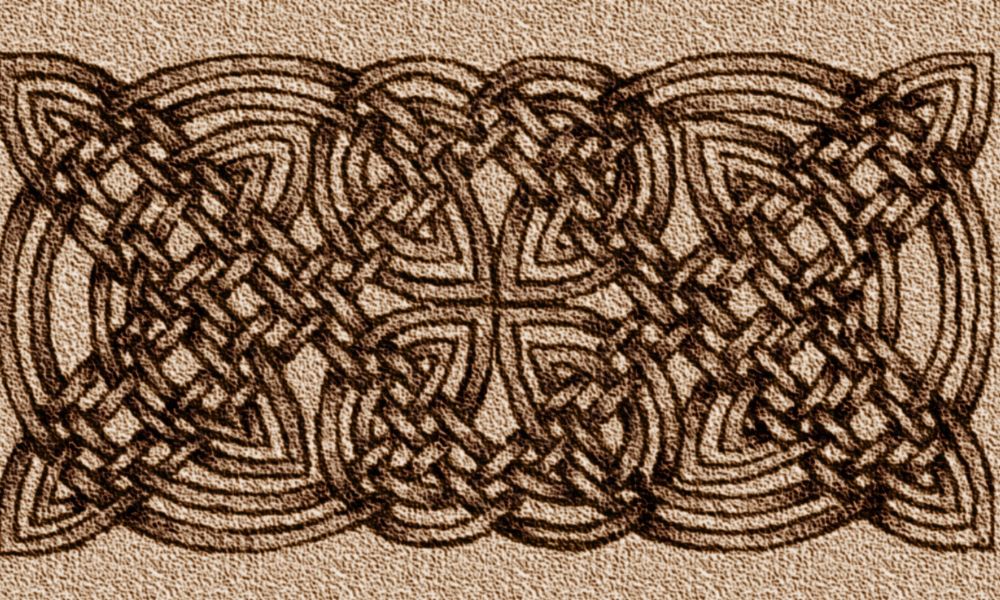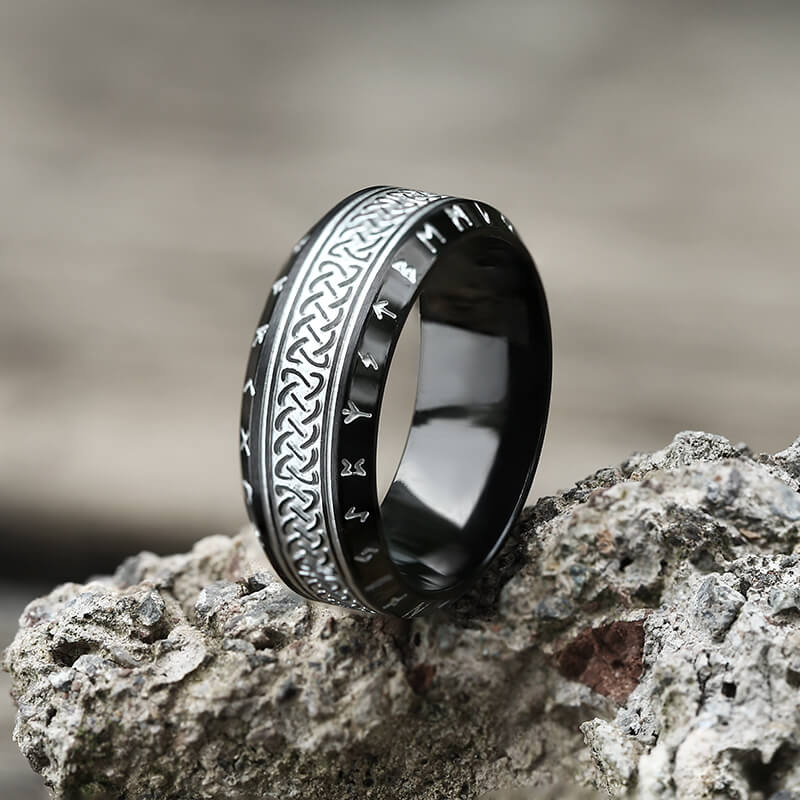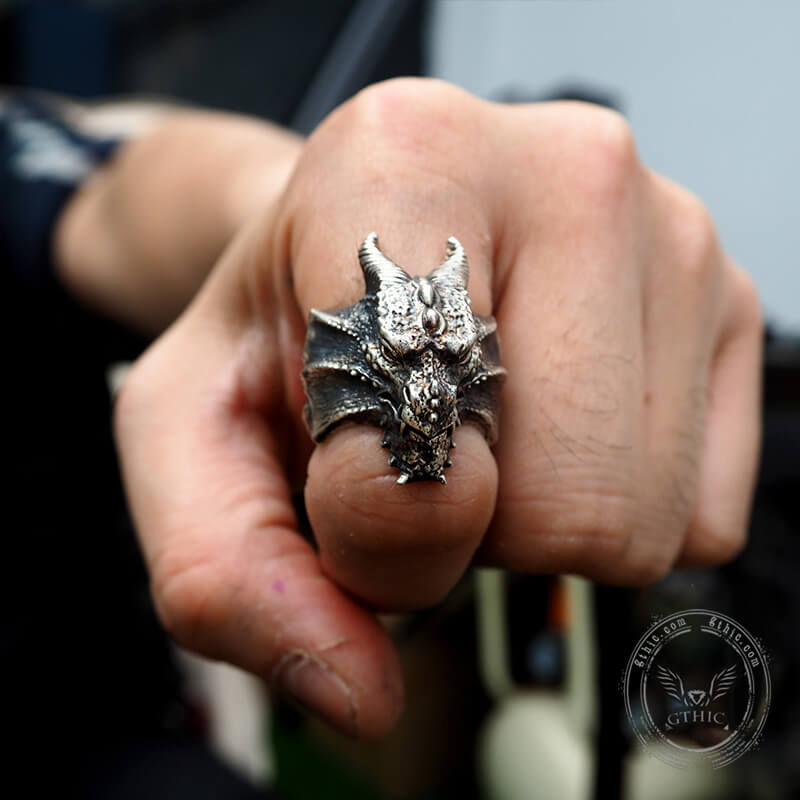The intertwining narrative of human culture and history often brings forward fascinating surprises, such as the exploration of Viking and Celtic symbols. But did the fierce and nomadic Vikings use the harmonious Celtic knots? Let’s delve into this intriguing puzzle and unravel the threads of time.
In the resplendent saga of human civilization, the Vikings and the Celts hold prominent chapters. Despite their geographical distance, these two societies shared an intrinsic bond in their appreciation for symbolic artistry, especially in their jewelry, now part of the stunning collections at the Gothic Merchant.
The Vikings: Explorers and Artisans
The Vikings were fearsome warriors, explorers, and skilled artisans who meticulously crafted objects of incredible beauty and symbolism. From Asgard’s mythic realms to Midgard’s mortal world, their cosmology was vividly reflected in their jewelry.
Take, for instance, our collection of Viking rings. Each is embedded with a rune, a symbol integral to the Viking way of life. Likewise, the Helm of Awe and Vegvísir compass, emblematic of protection and guidance, reflect the philosophical underpinnings of the Viking society.
Viking symbology also extended to the natural world. The Tree of Life, Valknut, and Raven each served as metaphors for life, death, and transformation. The Dragon, another common motif, was a totem of power and wisdom in Viking culture, further evident in our stunning dragon ring collection.
The Celts: Harmony in Knots
The Celts, on the other hand, expressed their beliefs and values through intricately designed knotwork. Unlike the Vikings, Celtic knots were devoid of the beginning or the end, reflecting the Celts’ belief in the eternal cycle of life and the interconnectedness of all things.
“The timeless elegance of the Celtic knot finds its roots in the ancient belief of unity and continuity. They symbolized the harmony of life, a mirror to the Celts’ philosophy.”
The beauty of Celtic knotwork can be witnessed across various Gothic Merchant collections, infusing every piece with age-old elegance.
The Intersection: Viking Celtic Influence
The Vikings and the Celts, two distinct cultures, crossed paths in the labyrinth of history. This interaction was bound to have left an imprint on their artistic expressions. As historians suggest, Vikings may have borrowed the Celtic knots, adapting them to their artistic lexicon, creating a beautiful confluence of cultures.
To truly understand the connection, we’ll delve deeper into the co-existence of these two civilizations and their artistic intermingling in our next segment. Remember, each knot we untie leads us closer to the truth.
A Confluence of Cultures

As we trace the threads of history, we find that Vikings and Celts were both great seafarers, their paths frequently intersecting, leading to cultural exchanges. This melding of societies manifested in the distinctive designs and symbols found in Viking artifacts bearing a Celtic touch.
The Berserker, a fierce Viking warrior, is one such example where Celtic influence is suspected. The animalistic frenzy and raw strength of the berserker parallel the ferocity of the Aztec Jaguar warriors, known for their intimidating animal-themed armor – a feature often seen in Celtic iconography.
But perhaps the most fascinating example of cultural exchange is the Viking use of knot designs. The Viking Valknut jewelry, a symbol associated with Odin, resembles the triquetra, a type of Celtic knot. This shared motif, a result of cultural blending, showcases the diversity of the ancient world.
Knots, Symbols, and Stories

Symbols, like stories, hold the power to transcend time and space. The Viking runes and Celtic knots embody this idea, each a tale of its civilization, narrating beliefs and values through their intricate designs.
One might wonder what meanings these symbols held for those who wore them as adornments. What stories were they trying to tell? In our collection of Viking jewelry, each piece unravels a narrative, a chapter from the rich tapestry of Viking folklore and ideology.
“Symbols are the keys to understanding the stories of the ancients. They are the silent storytellers, etching tales of time onto the canvas of eternity.”
The Art of Adornment
The art of adornment was an integral aspect of both Viking and Celtic societies, serving both a functional and aesthetic purpose. But beyond the superficial, jewelry was a language, a mode of communication that reflected social status, personal beliefs, and cultural values.
The Viking earrings and bracelets in our collection echo these sentiments. They capture the spirit of the Viking era, the belief in the interconnectedness of all life, and the celebration of individuality and strength.
For the Vikings and the Celts, the art of jewelry-making was not merely a craft but a testament to their way of life, a tradition that has survived the test of time.
The Enigma of the Runes and Knots
Runes, the alphabet of the Vikings, are more than mere letters. Each runic symbol has a wealth of meanings and stories embedded within. Take, for example, the Helm of Awe rune. Found in our Helm of Awe ring collection, it represents invincibility and the fear that warriors instill in their enemies.
On the other hand, Celtic knots, with their infinite loops and intricate designs, symbolize eternity, continuity, and the interconnectedness of all life.
“In every knot, there is a tale, in every rune, a story. To unravel them is to journey into the heart of ancient wisdom.”
Interestingly, the Vikings too, incorporated such never-ending patterns in their designs. The Viking ‘Tree of Life’ is a perfect example of this similarity, reinforcing the hypothesis of cultural cross-pollination.
Shared Symbolism: A Testament to Cultural Exchange
Diving deeper into the symbolism, certain parallels emerge. For instance, consider the ‘Valknut’, a motif of three interlocking triangles prominent in Viking mythology, and the ‘triquetra’, a Celtic symbol of three interwoven arcs. Though differing in form, both symbols resonate with the concept of trinity and cyclical progression, illustrating the universality of specific ideas across diverse cultures.
The dragon is significant in the mythologies of the Vikings and the Celts. Dragons were symbols of chaos and destructive forces to the Vikings, while to the Celts, they embodied sovereignty, power, and magic.
Both civilizations respected and revered these mythical creatures, incorporating them into their artwork and jewelry, as seen in our selection of dragon rings.
The Legacy Lives On
Today, the art and symbols of the Vikings and Celts live on, not only as a testament to their cultures and beliefs but also as a reminder of the interconnected tapestry of human history. As we adorn ourselves with these ancient symbols, we are not just wearing jewelry; we are carrying with us our ancestors’ tales, traditions, and wisdom.
From the Ancient to the Contemporary
With their complex designs and rich historical resonance, Viking and Celtic jewelry styles have found a new lease of life in the modern era. Today, they are worn not just for their aesthetic appeal but also as a connection to a long-lost history and a symbol of strength and bravery.
In men’s gothic jewelry, such designs have found a special place. The edgy, intricate, and bold styles of both Viking and Celtic motifs have seamlessly blended with the Gothic aesthetic, creating a unique and striking range of jewelry.
The revival of these age-old designs in the form of rings, bracelets, necklaces, and more can be seen in our collections at Gothic Merchant. From our Viking necklaces and bracelets, each piece is a testament to the beauty and profundity of these ancient cultures.
Unraveling the Knot
So, did the Vikings use Celtic knots? The answer isn’t as straightforward as a simple yes or no. As we’ve journeyed through these two remarkable civilizations’ history, symbology, and cultural exchanges, it becomes clear that while the Vikings might not have used Celtic knots literally, there was undoubtedly a shared pool of symbolic language and motifs.
The intricate knotwork, symbols like the dragon and the raven, the intricate designs of nature, and the profoundly symbolic runes and glyphs were all part of a broader, interconnected artistic and spiritual tradition that spanned across cultures and centuries.
Whether you’re drawn to the eternal interlacing of the Celtic knots or the cryptic wisdom of the Viking runes, one thing is clear: wearing these symbols is not just a style statement but also a connection to our shared human heritage.
Looking for your piece of Viking or Celtic history? Explore our range at Gothic Merchant, where each piece of jewelry is more than just an accessory – it’s a story waiting to be told.
So, go ahead. Choose your symbol. Carry your story. And let the ancient wisdom of the Vikings and Celts live on in the rhythm of your everyday.
FAQ’s
Is The Trinity knot Celtic or Norse?
The Trinity knot, also known as the Triquetra, is primarily associated with Celtic culture. It is commonly found in Celtic artwork and symbolism.
What does the Viking Celtic knot mean?
The Viking Celtic knot is a combination of Norse and Celtic artistic styles. It represents the merging of Viking and Celtic cultures and often symbolizes strength, unity, and the interconnectedness of life.
What is the difference between Celtic and Norse tattoos?
Celtic tattoos typically feature intricate knots, spirals, and other patterns inspired by Celtic art. Norse tattoos, on the other hand, often depict symbols from Norse mythology, such as runes, dragons, and gods like Odin and Thor.
Who used Celtic knots?
Celtic knots were primarily used by the ancient Celts, a group of tribal societies that lived in Ireland, Scotland, and other parts of Western Europe. These knots were prevalent in their artwork, jewelry, and manuscripts.
What is the most powerful Viking symbol?
The most powerful Viking symbol is often considered to be Mjölnir, Thor’s hammer. It represents strength, protection, and the power to ward off evil.
Is the Celtic Knot pagan?
The Celtic Knot is not inherently pagan, but it has been adopted and used by various pagan and neo-pagan groups as a symbol of their beliefs and spiritual practices.
What is the most powerful Celtic symbol?
The most powerful Celtic symbol is subjective and can vary depending on personal beliefs and interpretations. However, the Celtic Cross is often regarded as one of the most significant and influential Celtic symbols. It combines the Christian cross with a circle, representing the union of spirituality and the natural world.
What is the difference between Celtic and Viking knots?
Celtic knots and Viking knots share some similarities, such as their intricate designs and knotwork patterns. However, Celtic knots are generally more abstract and focus on endless loops and interlacing, while Viking knots often depict animals, dragons, and other figures in their designs.
What is the lucky Viking symbol?
One of the lucky Viking symbols is the Helm of Awe, also known as Ægishjálmur. It is believed to have protective qualities, bringing luck, strength, and courage to its wearer.

Belladonna crafts bewitching blog posts inspired by Gothic elegance, marrying shadow with style. As a discerning researcher, she curates products that echo whispers of moonlit romance. With a playful twinkle in her eye and a quill always at hand, she invites readers to dance on the line between mystery and enchantment.







0 Comments